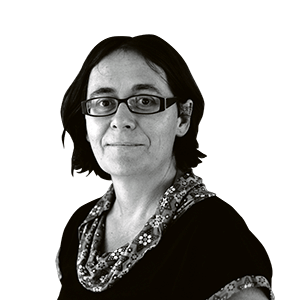The first step towards creating a one-stop shop for social and healthcare services has been approved.
The Catalan Parliament gives the green light to the agency that must reduce red tape and facilitate a single circuit for both networks within two years.


Carmen Castillo has been seeing a psychiatrist for over forty years and, now, about to turn 75, she often visits her primary care physician or the hospital more than she'd like. On her daughter's advice, she's waiting for the telecare button and a dependency assessment to qualify for a subsidy to adapt her bathroom, a process she says has become complicated because she had to go to the doctor who has known her for years to get a report on how osteoarthritis has reduced her mobility. "They send you from one place to another looking for someone who understands you and will take care of you," she complains. This duplication of procedures is what the future Integrated Social and Healthcare Agency (AGAISS-Cat), approved this Wednesday by the Catalan Parliament, aims to eliminate. However, if all goes well, it won't be operational for another year, and the full integration of both services won't be complete until November 2027. The approval of the AGAISS-CAT law was supported by the PSC, Junts, ERC, and Comuns, with abstentions from the PP and Aliança and votes against from the CUP and Vox deputies. During the parliamentary debate, the Minister of Health, Olga Pané, emphasized that the new body will guarantee the sustainability of the healthcare and social services systems, while the Minister of Social Rights, Mònica Martínez, stated that a "new era" is beginning to integrate two pillars of the welfare state and profoundly change the way care is provided. For four decades, Catalan governments had attempted to integrate these two services, but it is only now that a tool has been created to "improve care" for the one million people who require healthcare and social services, whether due to dependency, disability, or chronic illness. The project leaders explain that AGAISS-Cat represents a "new perspective," a "pioneering and innovative" model that should make life easier not only for citizens but also for professionals. The cornerstone of the new social and healthcare structure is a one-stop shop that will guide patients through the pathways, preventing them from having to go from one doctor to another or from the social worker to the nurse. With this model, there will be a designated professional or team that can collaborate to assess and decide, in a coordinated manner, the best medical or social solution for each person at any given time, without the need to repeat tests or duplicate paperwork. This is the case of Castillo, who was diagnosed and medicated "for one thing" at the hospital and "for another" at the primary care center. The new model should involve a single assessment and streamline the pathways, which are currently very fragmented and bureaucratic. Less medication and fewer hospitalizations.
In principle, technology should facilitate the sharing of information between primary care physicians and hospitals with staff from municipal social services or the Department of Social Rights and Inclusion so that professionals can quickly understand the details of medical and social needs. This, they claim, will reduce overmedication, since there is often a tendency to prescribe drugs to treat a social problem, as well as excessive hospitalizations, and will lead to more accurate diagnoses and treatments.
For the past year, the Departments of Social Rights and Health have launched 18 pilot integration programs, and according to initial data, they are optimistic, although they insist that the Agency "is not the end point but the starting point." Overall, hospital admissions have fallen by 13%, and there has also been a reduction in medication use. During this period, 95% of the thousand nursing homes in Catalonia have returned to their previous status. attended by healthcare workers from the public networkThe Government will have to decide who will oversee AGAISS-Cat, the Department of Health or the Department of Social Rights, whose technicians have been working for four years on how to implement the theoretical philosophy that both systems should be synchronized. For the moment, no increase in staffing levels is planned. "It's not about spending more, but spending better," they point out. Meanwhile, in terms of reactions, the social sector maintains that without financial resources the agency is "crippled" from the start, in the words of the nursing home association ACRA, although it admitted that it is an absolutely necessary body. Similarly, the Third Sector Roundtable urges that the entity be provided with the structures and resources to overcome the "fragmentation" between the social and healthcare systems or to improve care for people with complex needs or situations of dependency.
